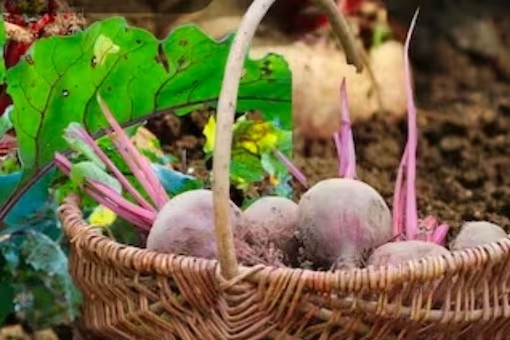Including salad in your diet is crucial as it provides a wide range of essential nutrients. While salads like carrots, radishes and cucumbers offer many benefits, beetroot stands out for its unique ability to address blood deficiencies. Many people purchase beetroot despite its relatively higher cost which strains their budget.
But cultivating beetroot at home is a practical solution. It not only allows you to enjoy this nutritious vegetable without spending a lot but also eliminates the hassle of frequent market trips. If you’re interested in growing beetroot at home, below are the steps.
To grow beetroot at home, start by selecting and purchasing high-quality seeds, readily available at nurseries or markets. The quality of the seeds significantly influences the beetroot yield. Once you have these seeds, you can plant them in pots or other suitable containers.
Now, to grow beetroot in a home pot, start by preparing the soil. Begin with a mixture of 40 per cent silt, 20 per cent clay soil and 40 per cent sand. Ensure that the pot intended for planting beetroot seeds has small drainage holes. Fill the pot with the prepared soil and let it sit for approximately one hour.
To start growing beetroot, make holes in the pot’s soil at intervals using your finger. Gently insert one beetroot seed into each hole. Remember, it’s crucial to plant just 5 to 7 seeds in one pot to promote the best beetroot growth. After placing the seeds, cover the holes. In about 7 to 10 days, you’ll observe beetroot plants emerging from these seeds.
Beetroot plants require minimal watering, usually about 5-6 times per month, which makes them an ideal low-maintenance option. This approach allows the plant to mature in about three months, providing you with homegrown, ready-to-eat beetroots for various culinary uses while also conserving water.
Beetroot is a versatile vegetable for your home garden, with many culinary possibilities. You can eat it raw, boiled, roasted or in various dishes. It’s also great for pickling and making condiments. Additionally, the young leaves work well in salads and the mature ones can be cooked like chard or spinach, offering a wide range of culinary options.


